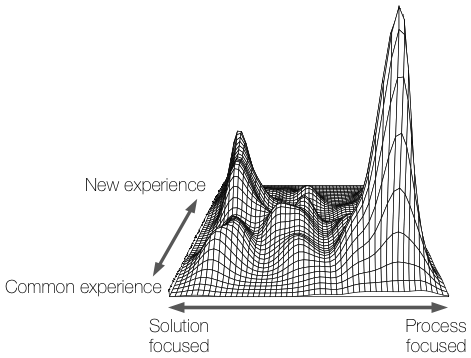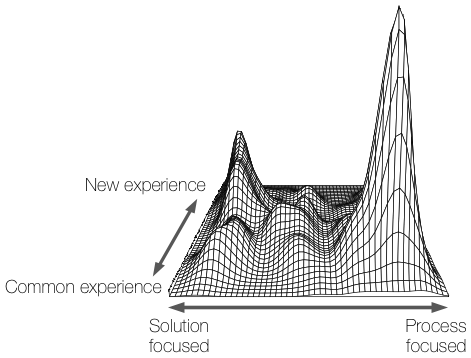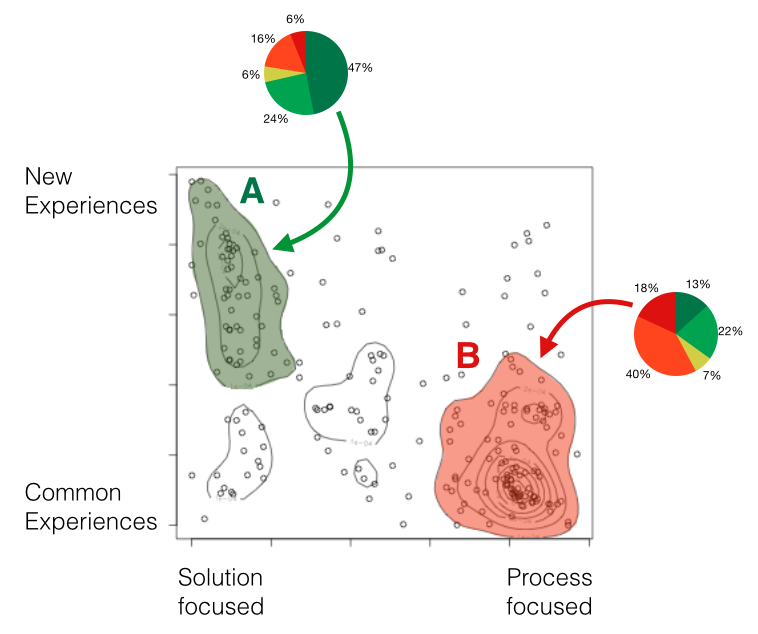Menu

I was prompted by an email exchange earlier this week about a company seeing customer experience as the make or break for succeeding at a brand transformation or a brand change initiative. SenseMaker® is being considered but is currently viewed as a technology driven solution which was a concern as this particular company has seen far too many other technology driven solutions fail with little or no adoption. This bothered me as I have seen many people quickly categorize SenseMaker® as a technology solution which to my mind is a very limited perspective on what it offers. Most if not all of my introductory conversations emphasize that SenseMaker® is a narrative or engagement driven solution that uses technology to aid in scaleability as well as to facilitate wider and deeper scanning.
I often emphasize the process of journalling real-time observations and capturing fragments of natural conversations over the technology and process of recording and representation. As such the focus is on capturing a sufficient sample of a wider flow of experiences moment to moment. What you want to emphasize is that a SenseMaker® initiative should seek at creating a way of tapping into the natural discourse or multiple flows of micro-narratives (experiences, observations, reflections, or “what-ifs” in the form of micro scenarios) in sufficient volume to enable the organization to be far more effective at sensing the current reality including the dynamic shifts in real time.
So thinking about customer experience, if you engage your employees widely in observing and noticing the customer experiences in fragmented moments as they occur on a day to day and week to week basis, and gather the deeper meaning of each of those moments with the signification process embedded in SenseMaker®, you will have very quickly engaged your organization in becoming a sensing network capturing a diversity customer experiences as they occur. Also in this process you are shifting the focus away from “what are we individually, departmentally, or organizationally, doing right or wrong in terms of creating customer experiences” to “what are we individually seeing from experience to experience, observation to observation on how our customers are reacting to our service delivery”. This is a subtle but a key displacement of attention as it shifts the burden of responsibility from individuals to the department or organization as a whole. This allows you to get a more authentic sense of reality.
The opening image, shown again below, is a sample of a narrative landscape. This image is from a real data dataset but with modified axis labels to preserve customer confidentiality.

Below I show the same landscape as a topographical chart. This narrative landscape shows the contour lines mapping out the areas of both high and low narrative density. The peaks on this landscape represent high density or probability of occurrences. Inverted these could be deep wells so you can change the perspective if you’d like.

On the next image (see below) I have highlighted two particular areas. Area A represents customer experience stories where the focus is on solutions but the experience is quite new. Area B shows customer experience stories where the respondents said these are very common occurrences and relate to situations where the focus is on process or procedures. The reason I have highlighted area A of the landscape green and area B red is because of what’s revealed in the pie charts. Another SenseMaker® question asks the respondent to say whether the experience they have reported was overall positive, strongly positive, neutral, negative, or strongly negative. The customer experiences in area A are overall much more positive than area B hence the colour coding.

The narrative landscape shown with the positive and negative overlay is quite encouraging. It indicates an emerging pattern of customer experiences which are on balance positive and related to new experiences. So diving into these stories more deeply and understanding which are well oriented for supporting a brand transformation give us a sense of actions that can be taken to amplify this effect. While the negative stories in Area B or otherwise, indicate danger points or potential barriers to transformation. Avoidance or actions that dampen the impact of such negative contexts will aid a transformation.
Now to take this even further, if you gather experiences and observations from your customers using the same SenseMaker® framework you can contrast how your employees are seeing customer experiences with how the customers are seeing their own experiences. This contrast will allow you adapt and evolve your customer experience strategy in real time with much more authentic feedback. And once you quickly build your customer experience knowledge base to thousands or even tens of thousands of recorded micro-narratives you will have established a comprehensive current customer experience narrative landscape. With continuous gathering established (i.e. employees making daily or weekly customer experience observations and customers sharing their experiences and observations) you can now monitor for shifts as you try stimulate your brand change in a desired direction from where your current brand is positioned across the customer experience landscape.
Cognitive Edge Ltd. & Cognitive Edge Pte. trading as The Cynefin Company and The Cynefin Centre.
© COPYRIGHT 2024

Final day of two working up here in Deiniolen (it's near Llanberis in case you ...
In December 2012, I flew to Bratislava with Dave Snowden where we met with a ...